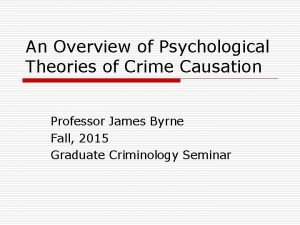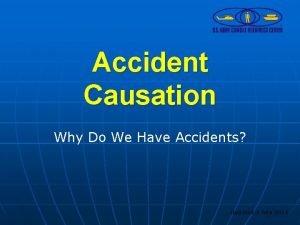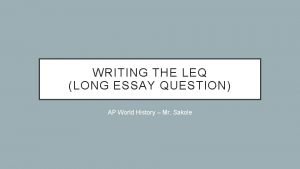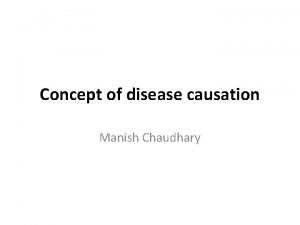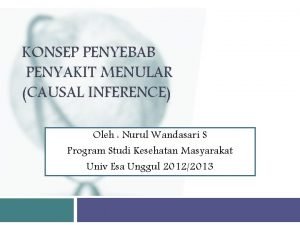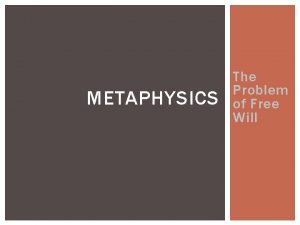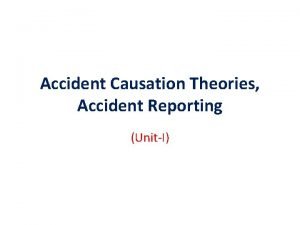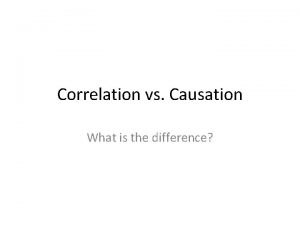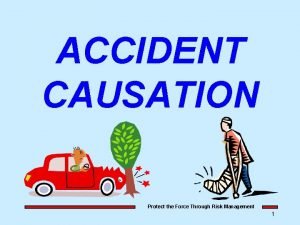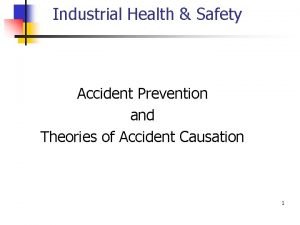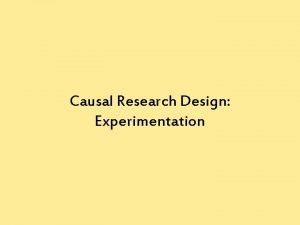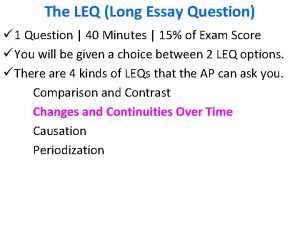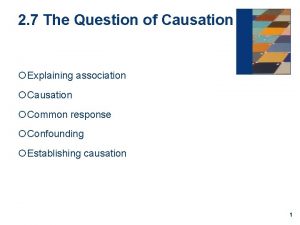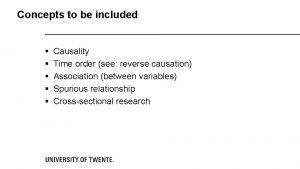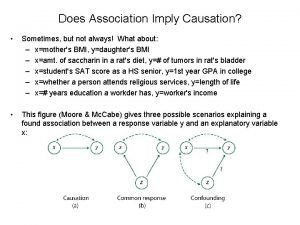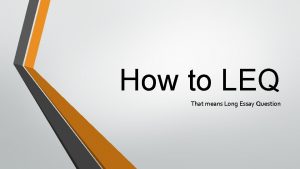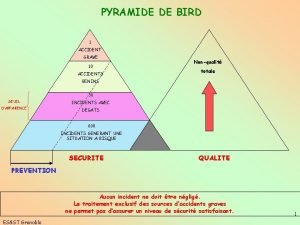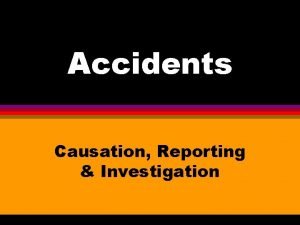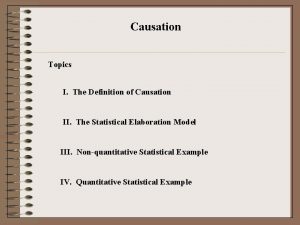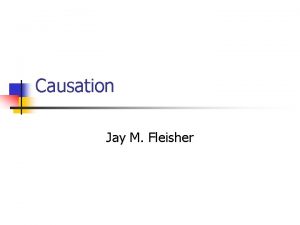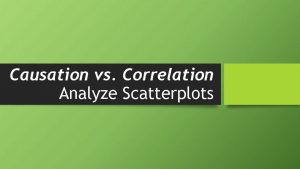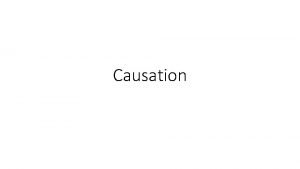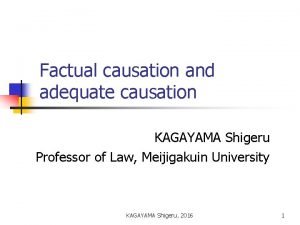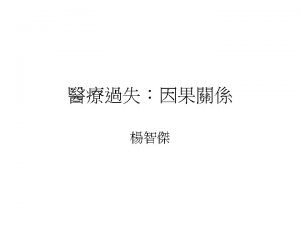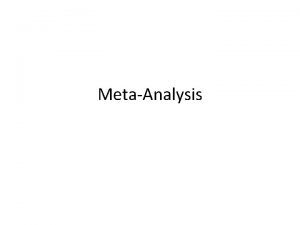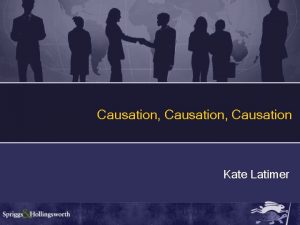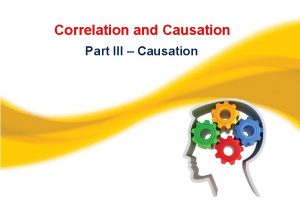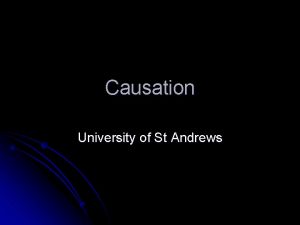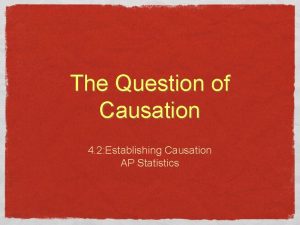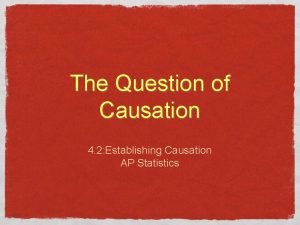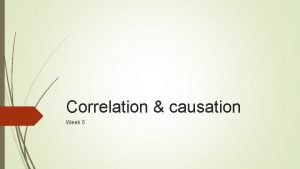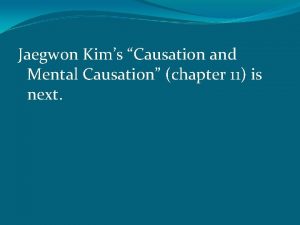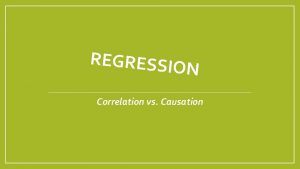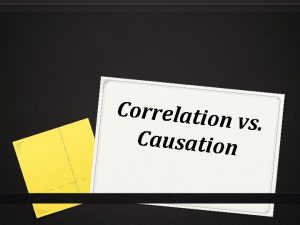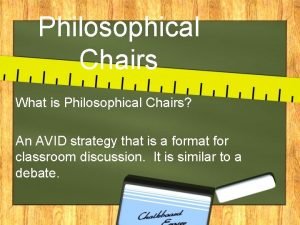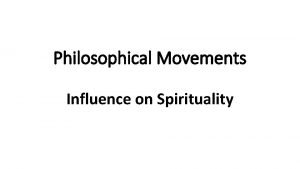Counterfac al Theories of Causation CTCs Oxford Philosophical


























- Slides: 26

Counterfac al Theories of Causation (“CTCs”) Oxford Philosophical Society Members’ Day August 2018 Michael Donnan 1

A Minor Mishap in the Chemistry Lab. 2

An unqualified dependence relation between distinct events Where c and e are distinct events, e depends (in some way) on c if and only if: (1) if it were the case that c occurs, then it would be the case that e occurs, and (2) if it were the case that c does not occur, then it would be the case that e does not occur. 3

The Nature of Counterfactuals A counterfactual conditional sentence –“counterfactual” for short – is a conditional sentence in the subjunctive mood. Typically, it has the form “If it were the case that A, then it would also be the case that C”. Symbolically: A □→ C 4

Counterfactuals – a syntactic variant “If kangaroos had no tails, they would topple over. ” (David Lewis, Counterfactuals, 1973, page 1) 5

Counterfactual Dependence Where c and e are distinct events, e counterfactually depends on c if and only if: (1) if it were the case that c occurs, then it would be the case that e occurs, and (2) if it were the case that c does not occur, then it would be the case that e does not occur. 6

David Lewis (1941 – 2001) 7

Difference-making and the relation of cause and effect “We think of a cause as something that makes a difference, and the difference it makes must be a difference from what would have happened without it. Had it [i. e. the difference-maker or cause] been absent, its effects – some of them at least, and usually all – would have been absent as well”. [Addition to original in italics. ] 8

Causal Dependence Where c and e are distinct events, and both occur, e causally depends on c if and only if: if it were the case that c does not occur, then it would be the case that e does not occur. 9

A Simple Counterfactual Theory of Causation (“CTC”) Where c and e are distinct events, and both occur, c is a cause of e if and only if: if it were the case that c does not occur, then it would be the case that e does not occur. 10

The Traveller in the Desert (I) 11

The Traveller in the Desert (II) POISON INGEST DEATH HOLE LEAK EMPTY 12

Possible world semantics and the truth conditions of A □→ B W 1: A & C W W 2: A & not C A □→ C 13

Causal Dependence (Reprise) Where c and e are distinct events, and both occur, e causally depends on c if and only if: if it were the case that c does not occur, then it would be the case that e does not occur. 14

Causal Chains and Causation (Lewis, 1973) A causal chain is a finite sequence of distinct actual events in which each event is causally dependent upon the preceding event. Where c and e are distinct events, c causes e if and only if c and e both occur, and there exists a causal chain leading from c to e. ” 15

The Traveller in the Desert (Reprise) POISON INGEST DEATH HOLE LEAK EMPTY 16

Late Pre-Emption 17

Symmetrical Overdetermination 18

Two Wizards and the Prince 19

Lewis’s Notion of an alteration of an event An alteration is an event, which may be actualised or unactualised, that occurs at a slightly different time or in a slightly different manner from a given event. The term “alteration” is to include the given event itself (the “unaltered alteration” as Lewis put it)! 20

Lewis’s relation of influence Where c and e are distinct events, c influences e if and only if there is a substantial range c 1, c 2, … of different not-too-distant alterations of c (including the actual alteration of c) and there is a range e 1, e 2 … of alterations of e, at least some of which differ, such that if c 1 had occurred, e 1 would have occurred, and if c 2 had occurred, e 2 would have occurred, and so on. 21

Lewis’s final analysis of causation Where c and e are distinct events, c causes e if and only if there is a chain of stepwise influence from c to e. 22

Late Pre-Emption (Reprise) 23

The Last Train to Clarksville 24

David Hume’s Second Definition of “Cause” (First Enquiry, Section VII) (1711 – 1776) We may define a cause to be …. . Where, if the first object had not been, the second never had existed. 25

Lewis’s 1973 CTC – the Collins, Hall and Paul Version Event c causes event e if and only if c and e both occur, c and e are distinct and there is a (possibly empty) set of events {d 1, d 2, … , dn} such that if c had not occurred, d 1 would not have occurred; and if d 1 had not occurred d 2 would not have occurred; … and if dn had not occurred, e would not have occurred. 26
 Ultimate cause of behavior
Ultimate cause of behavior Ultimate and proximate causes of behaviour
Ultimate and proximate causes of behaviour Web causation of disease
Web causation of disease Psychological theories of crime
Psychological theories of crime Temporal relationship epidemiology example
Temporal relationship epidemiology example Example dbq
Example dbq Modern accident causation model
Modern accident causation model How to write a leq ap world
How to write a leq ap world Causation of disease
Causation of disease Contoh web of causation
Contoh web of causation Anocracy example ap human geography
Anocracy example ap human geography Agent causation
Agent causation Multiple factor theory osha
Multiple factor theory osha Statistics correlation vs causation
Statistics correlation vs causation The army accident causation model
The army accident causation model Petersen's accident/incident theory
Petersen's accident/incident theory Example of causal research
Example of causal research Jaring-jaring sebab akibat penyakit tbc
Jaring-jaring sebab akibat penyakit tbc Causation dbq thesis
Causation dbq thesis Causation in criminal law
Causation in criminal law Association and causation
Association and causation Reverse causation examples
Reverse causation examples Contoh triadic reciprocal causation
Contoh triadic reciprocal causation Association and causation
Association and causation Kinesis ecology
Kinesis ecology The leq
The leq Pyramide de bird définition
Pyramide de bird définition



